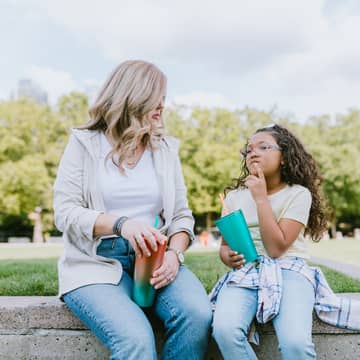I didn't realize, when we left the adolescent eating disorder treatment center, from what I hoped would be our last visit ever, that our work was just beginning.
Not necessarily the work to combat my daughter's eating disorder — we had been doing that work for quite some time already. This work was to combat a different mental illness — one that had gone undiagnosed and untreated for a very long time. This illness came into the picture way before my daughter ever thought twice about what she was eating.
OCD in children
The diagnosis of obsessive-compulsive disorder (OCD) was not new to our family. OCD was something we were familiar with, but our knowledge on how to recognize and fight it was minimal.
Right before leaving treatment, my daughter opened up to me about things she had been struggling with. I felt that these things needed to be addressed with her therapist. But, my daughter’s discharge date was quickly approaching. She was well on her way to recovery. And there just wasn't enough time left to tackle these new issues while still a patient at ERC. So, she carried these struggles home with her — struggles that centered mostly around intrusive thoughts which are so common to OCD.
When you don't have an understanding of OCD or even know what it looks like, these thoughts can seem real and feel very scary. This was the case with my daughter. To her, the thoughts felt real and scary and were tearing her apart. And she had carried these thoughts with her for a long time.
Helping a child with OCD
I am not sure if it was the numerous hours in therapy or group sessions she had attended, but something my daughter experienced while in eating disorder treatment gave her the voice to be able to articulate what she was feeling and thinking. Upon her return home, she was able to honestly talk about the thoughts she had been plagued with for so long.
The night that she opened up to me will forever be etched in my mind because I feel like it was a turning point for her. We were able to finally see the root of a major issue that she had been battling. And once that root was uncovered, our real work could begin.
Two things were crucial to begin to tackle our daughter's OCD. We needed:
1) An amazing therapist who had tools and methods that were relevant and impactful
2) A daughter willing to open up and be completely honest about the thoughts she was struggling with
Exposure therapy for OCD
Exposure therapy became our number one tactic to combat the OCD. And it worked wonderfully. Was it easy? Not in the least. But it was very, very effective. How does it work, you might wonder. Imagine being forced to do the thing that causes you the greatest level of anxiety, over and over and over again. That is the name of the game with this type of therapy. What we found was this: as intrusive thoughts were faced and challenged, they slowly began to diminish in power. Something as simple as writing or verbalizing the very things she was afraid of allowed our daughter to begin to regain control of her thoughts.
How to help a child with OCD at home
As parents helping a child do this type of work, we had to learn how to recognize the behaviors that were driven by OCD. Doing so allowed us to help her therapist formulate a game plan to tackle each one.
The other key we had to learn was how to remain calm when anxiety was increasing for my daughter. Battling her eating disorder had toughened us up a bit as parents. And we had learned a great deal about anxiety management through our parent training at the ERC.
We had learned that we couldn't ride the emotional wave with our daughter. We had to stay calm, even when her anxiety was peaking. Through this, we could become the anchor in her storm. This was not easy at all.
Our natural tendency was to match her anxiety with our own — or to catastrophize a situation.
But, if we remained calm and vigilant, and helped our daughter implement the strategies she learned in therapy, anxiety levels decreased and progress was made.
No parent wants to see their daughter struggling
Our daughter was struggling with not one, but two, serious mental illnesses. Difficult as it was, it also meant we got to watch our daughter learn how to fight. She had to become stronger than the thoughts that had worn her down for years. We got to be by her side as she worked to break down those thoughts — thoughts that had shaped her life for a long time — and help her build them back up into something so much better.
Seeing this progress helps me realize that all the effort spent supporting our daughter in recovery has been worth it, and it gives me added strength to continue our work going forward.
About the Author:
Sunnie Gruwell resides in Houston, Texas with her husband of almost 16 years and her six awesome children. She has immense gratitude for the life-saving treatment her oldest daughter received at Eating Recovery Center, Denver, and recognizes the extremely important role that caregiver knowledge and education play in the treatment of adolescents with eating disorders. Her continued support for her daughter reinforces the reality that recovery is not a one-time event, but a journey. She admires the strength, resilience, and growth her daughter has shown as she battles her eating disorder, and greatly appreciates ERC for equipping her family with the tools needed to feel empowered in their fight.
Read These Next:

